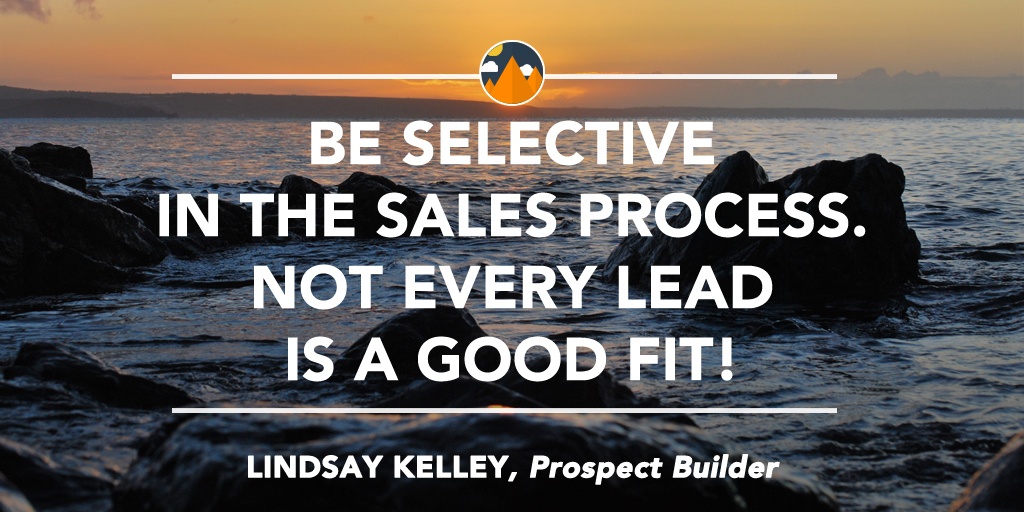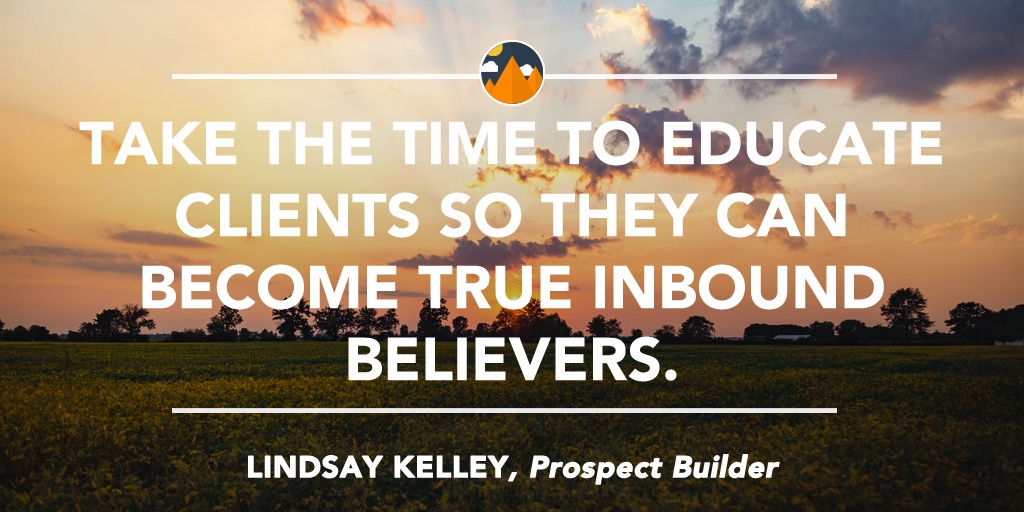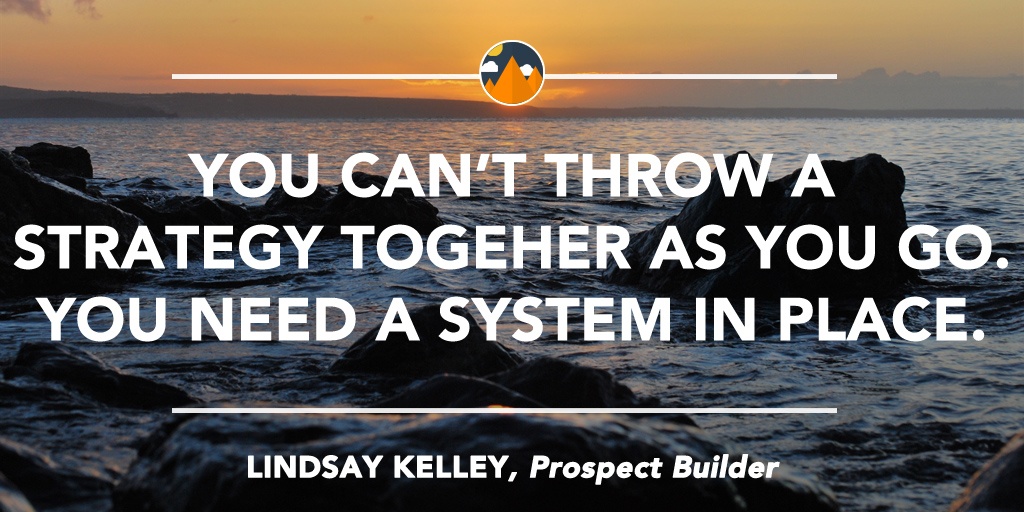How to Grow a Niche Inbound Agency with Lindsay Kelley

Selecting an Inbound Agency Focus
The inbound community is a small world. The more time you spend in this space, the more you realize this to be true. There are some amazing people here. This week we have one of those people joining us on Inbound Agency Journey.
Lindsay Kelley is the co-founder of Prospect Builder. They’re an inbound marketing agency for copier and managed services businesses. Her background in the industry has positioned her and the team to excel in this niche.
Before starting Prospect Builder, Lindsay co-founded the Alignment Group with John Shea. There are always two sides to stories, so be sure to take a listen to John’s interview from last week!
John and Lindsay parted ways on happy terms. While they’re not involved in separate inbound agencies, they still co-hosts of The Funnel. The Funnel is a podcast about the alignment of sales and marketing. If you’re not listening yet, add this one to your list!
Become a Selective Inbound Agencies
As you’re growing an agency, it is hard to fight the temptation to accept any prospect that comes. The thought of new revenue makes it almost impossible to pass up. Then you learn the true cost of bringing on a bad client.
The cost of bringing on the wrong client is both financial and emotional. The wrong type of client sucks resources and attention. This causes you to go beyond budgets and spend too much time trying to make them happy.
It also takes a heavy toll on your team. The wrong type of client can be disrespectful, late to pay, and mess with your inbound strategy. Each of these things can cause fatigue and stress to the servicing team.
So how do we avoid these clients?
A selective sales process is a big first step. This means accepting that not every lead is a good lead. You need to be able to determine where a lead stands.

Developing a best-fit persona can help you through this process. Here you take the time to figure out the characteristics you'd like to see of new clients. If a lead doesn’t fit this persona, that is a sign they’re not the best fit.
For example, at GuavaBox we worked on a few retainers where there was no marketing team at all. Our point-of-contact (POC) was the president of the company. It didn’t take us long to learn that presidents have a lot of their plates. They don’t always make inbound a priority.
The nature of a company without a marketing department is small. We decided that we weren’t going to work with companies in the future that didn’t have a marketing team. We needed a dedicated POC who could get us responses fast.
Lindsay and the Prospect Builder team do a great job of being selective in their sales process. I like their approach because it is subtile. With a simple statement, they change the power structure of the sales process.
When they find a lead that may be a good fit, they let the lead know that they’re selective about partnerships. They share that they’re near capacity. Since they’re near capacity, they need to check with the servicing team to see if the partnership is a good fit.
This is a small change, but it can pay big results. Having the confidence to be selective is an attractive quality.
Maintaining a Virtual Agency Culture
When you’re selective in the sales process, you’re going to grow the agency. More clients means you’re going to need a bigger servicing team. Maintaining a healthy inbound agency culture is a challenge as you grow.
One of the forces that drove Lindsay to leave Alignment Group was the desire to build a team. Now at Prospect Builder, she has built a team with great industry experience. They’re spread across three time zones, ready to service clients.
Establishing a healthy virtual culture is hard work. When you find it, you don’t want to rock the boat for risk of loosing it. This is a challenge for Lindsay today.

They want to continue to grow the client base of the agency, but this comes with a down side. You can only manage so many clients before you need to hire new team members. It takes discipline to put a system in place to make sure those hires are the best fit.
Through this process it is important that agency leaders are on the same page. If there is misdirection from the top, that can weigh on the team. Plans can change, but it is important to find alignment around the type of agency you’re build.
For resources about how to grow your inbound team, check out Matt Sunshine’s interview. He shared insight into their process of finding talent and culture fits at their agency. Also check out Patrick Biddiscombe’s interview. He shared how they built their agency culture code to hire the right type of people.
You Need a System From the Start
As the agency grows and the team expands, the need for processes becomes more clear. Servicing clients involves bringing together a lot of moving parts. These parts need to come together in the right order if things are going to run.
It is a lot like a NASCAR pit crew. When the car turns down pit road, the team needs to be ready. Each team member has their role. Together they all fill their role and they’re back on the track.

An inbound agency needs to function in the same way. When a new client comes on board, everyone needs to be ready.
Lindsay shared her frustrations about not having a system when they added a new client. When you add the client, everything is new and exciting. There is that mile-high experience.
A few weeks down the line you realize that the experience can’t last forever. You’re getting graded on your results. If you don’t put those building blocks in place early, you’re in trouble.
An agency framework is helpful when onboarding and servicing clients.
First break down the customer journey. Each client must pass through several stages before they’re ready to step out and do inbound. The Client Journey within the DoInbound Agency Framework consists of four parts:
- Build an Inbound GamePlan
- Build the Engine
- Tweak / Redesign the Website
- Inbound Campaigns
Each client needs to complete this process. For your internal team, document each phase of this process. Break these big picture goals into smaller, repeatable elements.
In the DoInbound Agency Framework these smaller elements are:
- Campaigns
- Deliverables
- Tasks
Documenting the process gives you the ability to scale the team. As new team members join, they have a pre-established system to follow.
Inbound takes time. As Lindsay shared, you need a system in place if you’re going to deliver results. Put the right building blocks in place early so your client can reach their goals.




